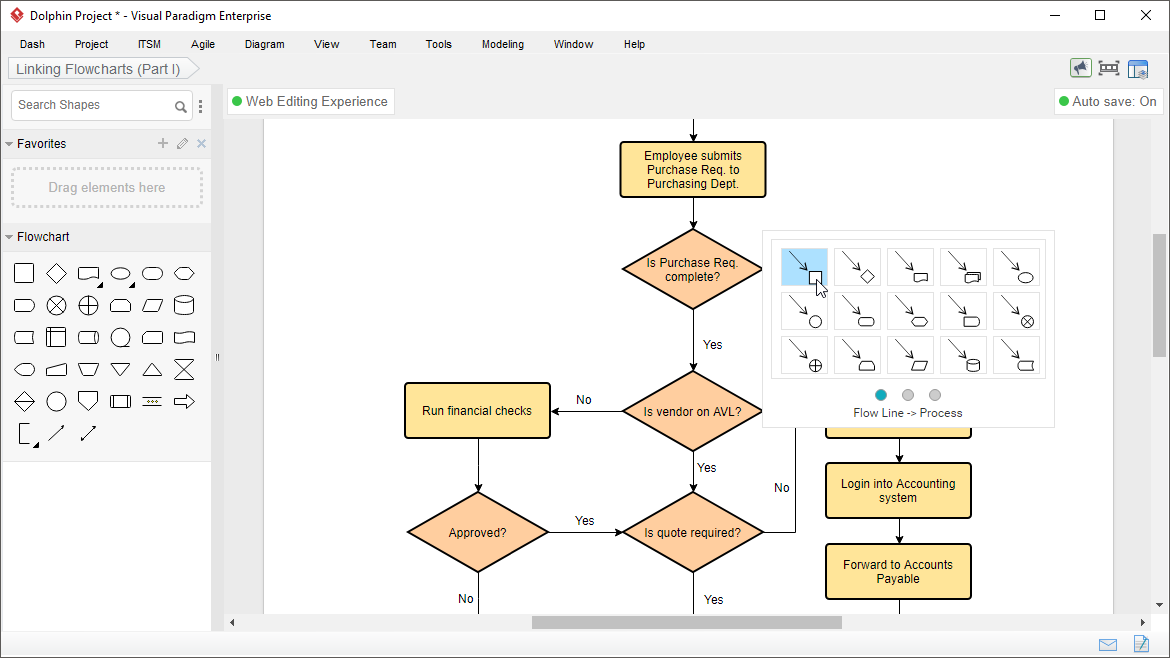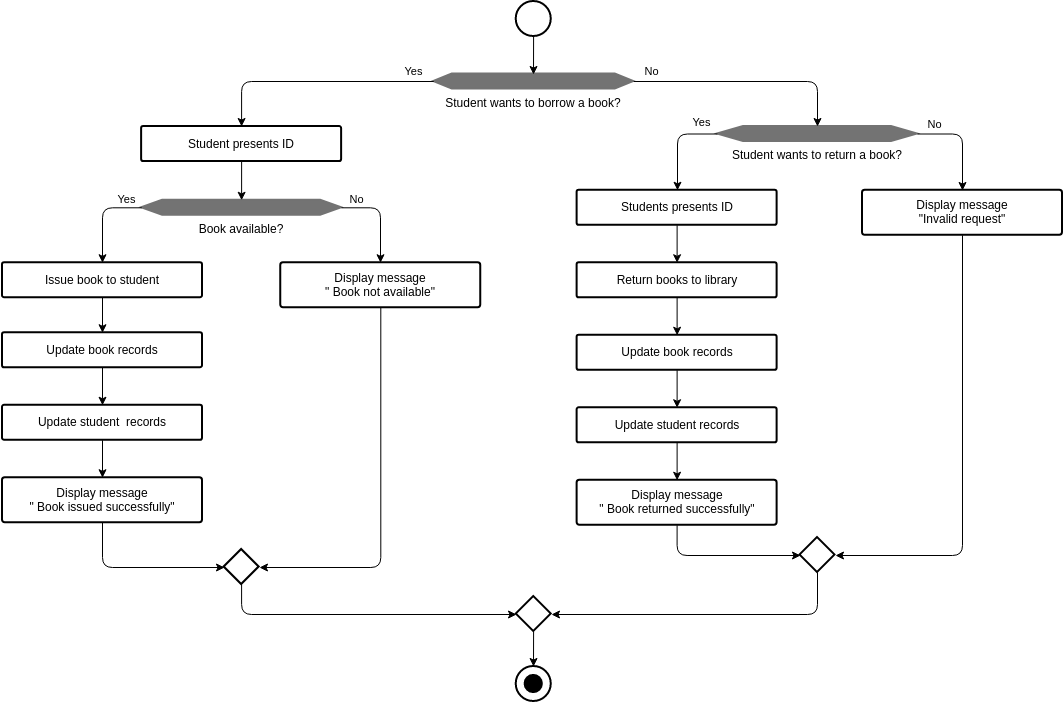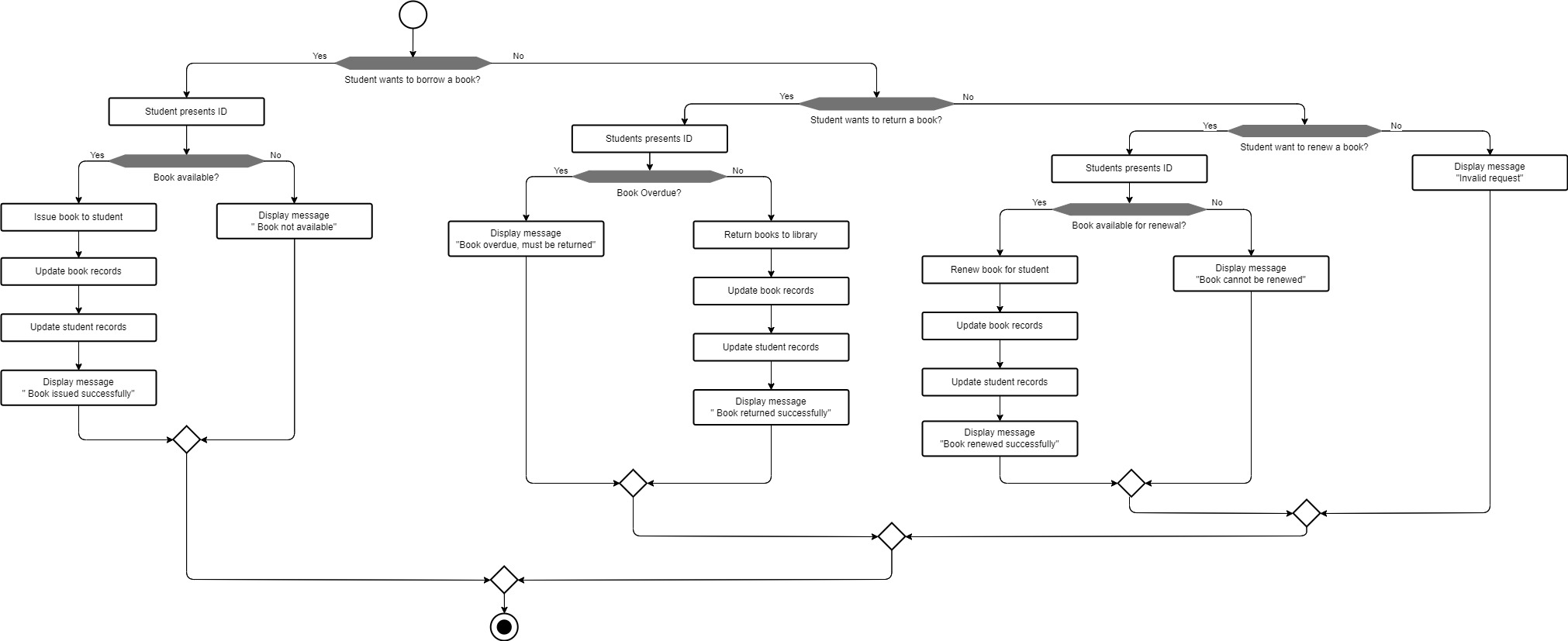Developing a College Library System: An Iterative and Incremental Approach with Flowchart Visualization
Problem Description – College Library System
A college library system needs to manage the borrowing and returning of books by students. The library has a collection of books that can be borrowed by students who present their ID. The library system must check if the book is available before issuing it to the student. If the book is available, it is issued to the student and the book and student records are updated. If the book is not available, a message is displayed indicating that the book is not available.
When a student wants to return a book, they must present their ID to the library system. The book is then returned to the library, and the book and student records are updated. A message is displayed indicating that the book has been returned successfully.
If the student does not want to borrow or return a book, an invalid request message is displayed. The library system must ensure that all book and student records are accurate and up-to-date, and that students can only borrow books that are available.

Developing the Flowchart for the Library System
This flowchart begins by asking if a student wants to borrow a book. If the answer is yes, the flowchart proceeds to ask if the book is available. If the book is available, it is issued to the student and the book and student records are updated. A message is displayed to indicate that the book has been issued successfully.
If the student does not want to borrow a book, the flowchart proceeds to ask if the student wants to return a book. If the answer is yes, the student presents their ID, returns the book to the library, and the book and student records are updated. A message is displayed to indicate that the book has been returned successfully.
If the student does not want to borrow or return a book, an invalid request message is displayed. The flowchart ends after the message is displayed.

Using Incremental Development to Add Functionality to the College Library System Flowchart
The incremental development process is an approach to software development where the system is built in small, incremental steps or stages, with each stage building upon the previous one. Each stage or iteration adds new functionality or improves upon existing functionality, with the goal of delivering a fully functional system at the end of the development process.
Suppose we want to add the renew book functionality to the college library system, we can follow the incremental development process. Here’s some additional information to supplement the original problem description:
When a student wants to renew a book, they must present their ID to the library system. The library system checks if the book is available for renewal and if it has already been renewed the maximum number of times allowed. If the book is available for renewal, the student can renew the book for an additional period, and the book and student records are updated. If the book is not available for renewal, a message is displayed indicating that the book cannot be renewed.
To implement the renew book functionality using the incremental development process, we could add a new branch to the flowchart after the “if (Student wants to return a book?)” decision point. The new branch would check if the student wants to renew a book. If the answer is yes, the library system would check if the book is available for renewal and update the book and student records accordingly. A message would be displayed indicating whether the book was renewed successfully or not.
By following the incremental development process, we can gradually build up the functionality of the college library system and ensure that each new feature is thoroughly tested and validated before moving on to the next stage. This approach can help to reduce the risk of errors and improve the overall quality of the system.

Advantages of Iterative and Incremental Software Development Compared to Linear Stage-Based Process
Software development is typically an iterative and incremental process because it is difficult to fully understand and define all of the requirements and specifications for a software system at the beginning of the development process. As such, software development often involves a process of trial and error, where the developers work on building and testing the system in stages, making changes and improvements along the way based on feedback and new information.
- This iterative and incremental approach is relevant to the flowchart because the flowchart represents a visual representation of the steps involved in the development process. As the development process progresses, the flowchart can be updated and modified to reflect the changes that are being made to the system. This helps to ensure that everyone involved in the development process has a clear understanding of the current state of the system and what needs to be done next.
- The iterative and incremental approach to software development is much better than a linear stage-based process because it allows for greater flexibility and adaptability. In a linear stage-based process, the development team must complete each stage before moving on to the next one. If a problem is identified during one stage, it may not be possible to go back and make changes without disrupting the entire development process.
- With an iterative and incremental approach, however, the development team can make changes and improvements at any stage of the process, without disrupting the entire process. This allows for greater flexibility and adaptability, and helps to ensure that the final product is of the highest quality possible.
In summary, the iterative and incremental approach to software development is typically used because it allows for greater flexibility and adaptability throughout the development process. The flowchart is a useful tool for visualizing and tracking the progress of the development process, and can be updated and modified as needed to reflect changes and improvements to the system. Compared to a linear stage-based process, the iterative and incremental approach is generally considered to be more effective, efficient, and adaptable.
Free UML Tool – Visual Paradigm Online

